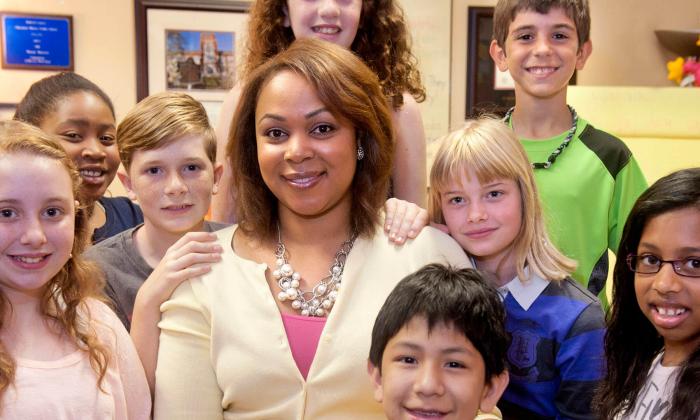The first word counselor Torrye Reeves teaches her students each year is “advocate,” a role she fills for both students and staff. The educator who nominated Reeves calls her a “powerhouse” and says she “works tirelessly every day to make sure students are learning in a safe environment.” Reeves says her goals, like fostering cultural awareness and respect, hinge on good communication accomplished through regular classroom visits and an open-door policy for her office.

Why did you become a counselor?
When grading a 3rd grade writing assignment, I came across a paper that read, “Ten years from now I will be living in my Section 8 home, collecting my weekly food stamps and hanging out in the club with my friends.” I realized this child was only speaking of what she knew, and that it was up to me to show her the world had so much more to offer. I saw that I could better serve students as a school counselor. Thus began my journey.
How do you feel the role of a counselor has changed in the past 20 years?
While great things have occurred over the past 20 years, many negative things have also taken place. School counselors are recognized and held accountable as professionals in the mental health field. Along with that has come a great deal of responsibility. Many school counselors are faced with administrative duties and are being pulled away from what counts the most—working with students.
How would you rate your school’s efforts toward diversity? What is the counselor’s role in supporting that diversity?
I believe our school is on the right track in recognizing and appreciating the diversity of our population, but we haven’t tested our limits. I conduct an activity with my students in which I stand at the front of the class with another adult. I ask the students to identify differences between us. Their immediate answers are often about race or hair length—physical attributes. I point out that appearances can be deceiving. Sometimes students are unaware of my Native American heritage. It gives the class an opportunity to talk about less apparent diversity.
What drives your commitment to anti-bullying programs?
Our school has relatively few bullying problems, and I am enthusiastic about keeping it that way. I believe that all students should be able to learn in a safe and healthy environment. Students must see from their own point of view in order to truly learn from a situation or moment, so I conduct anti-bullying activities with students in their individual classrooms to address ethnic, racial and religious diversity.
How do you help students and staff become more understanding and respectful of differences in culture, religion, ethnicity and sexual orientation?
Constant reminders and open communication are key in raising a community of culturally aware and respectful students. I give teachers a 3R Card (Relax, Relate and Release) students can use to come see me when they need to cool down, get away from an issue or just talk. I also visit every classroom in my school at least once a month. It’s refreshing to see how many of the students and teachers learn from one another when we create an open and loving space.
What is the single greatest challenge at your school? How are you addressing it?
I believe the single greatest challenge in schools today is raising self-sufficient kids who are able to problem-solve and make wise decisions. I focus on giving students the skills to use in times of difficulty and encourage them to follow through when a problem arises.
What’s the best way to keep parents involved in educating their children?
Communication, communication, communication! Keeping parents involved as active participants in their child’s academic and social/emotional lives is best. Our school has an eBlast and a Twitter page, and I send out quarterly bulletins about my classroom visits. Parents can also find helpful information on my web page.
What are your favorite books on social justice issues?
I absolutely love, love, love Patricia Polacco and Jacqueline Woodson. To name a couple: The Junkyard Wonders (Polacco) and The Other Side (Woodson).
We’ve heard you engage your students in creative ways. What’s the craziest stunt you’ve pulled?
This year for National Red Ribbon Week I transformed myself into Rock Star Ruby—the Red Ribbon Week Diva. Students are still trying to figure out if I am Rock Star Ruby. Of course, I will never tell.
Know an excellent administrator, librarian or counselor we should interview?
Tell us all about them.